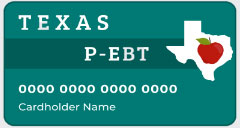Includes Private School Provisions
TEA Tells Districts What They Will Get
From $1.29 Billion First-Round CARES Act
The TEA posted (May 21) the grant amounts (by ISD and charter, and by service center area) that ISDs and charter districts can expect to receive from the $1.29 billion in the first round of federal pandemic relief funds targeted for schools, and provided guidance on how the money can be spent. (see also this TEA FAQ)
The funding is under the Elementary and Secondary School Emergency Relief (ESSER) grant program of the Coronavirus Aid, Relief and Economic Security (CARES) Act.
The TEA also provided districts with a summary of other upcoming school-related COVID-19 funding opportunities:
read more
Other Coronavirus News
School Calendars
Building on guidance released previously, the TEA issued (May 21) an updated 2020-21 school calendar FAQ that outlines three options:
- The “traditional” calendar format used by most districts up to now.
- A “COVID-19 response calendar” that mostly mirrors the traditional calendar except for building in extra days during the school year that could be used as make-up days if needed due to pandemic required school closures. This would be similar to “bad weather days” built into school calendars.
- An “interssesional calendar” that starts earlier in August than traditional calendars, with longer breaks for Thanksgiving, winter and spring, and ending in June, and includes provisions for state funded extra school days for elementary students.
The FAQ also gives examples of year-round calendars in use by the Clint, Socorro and Coolidge ISDs.
The FAQ also examines funding, staffing and related issues, but stresses that calendars — as long as they are within the state’s requirements — remain local school board decisions.
UIL News
The UIL released (May 22) its long-anticipated announcement on requirements and guidelines for schools that want to begin summer strength and conditioning for student athletes, and for marching band participants, starting June 8.
The mandates impose numerous pandemic required safety restrictions, and specify that schools can’t require students to participate in person.
Schools deciding to move forward with offering in-person activities are encouraged to do so carefully and with vigilance, “ensuring safety requirements … are closely adhered to in order to mitigate risk,” the UIL’s statement says.
Funding Speculation
Pandemic induced increased spending by schools and to the state for school-related expenses — and for revenue losses (such as sales tax declines) — for the 2019-20 through the 2020-21 school years could amount to as much as $20.4 billion for Texas, according to a state-by-state COVID-19 calculator by Learning Policy Institute (LPI) posted by Education Week (May 18).
Those are the calculated costs for Texas due to having to provide high-speed Internet access to students whose homes lacked it, increasing the number of meals distributed by schools, revenue reductions, etc.
Nationally, LPI estimates the pandemic cost to schools at $41 billion for 2019-20 for providing needed Internet services to students’ homes, extra meals, for other increased costs, and to make up for decreased revenue targeted for education.
All of this is, of course, speculative.
Dyslexia Mandate Cancelled
The TEA adopted (effective May 22) an emergency rule to cancel, for the 2019-20 school year only, a requirement that schools screen kindergarten students for dyslexia and related disorders at the end of the school year.
Next school year’s first graders, instead, will be given reading diagnostic instruments to allow for interventions to occur if warranted. The first graders are to be screened for dyslexia and related disorders by Jan. 31 2021.
All of the timelines in the adjusted rule are subject to change, at the commissioner’s discretion, as pandemic conditions warrant.
The TEA also issued (May 21) updated info regarding reading diagnostic waivers for grades K to 2, and 7.
P-EBT awareness

The TEA (May 21) provided online materials for distribution to families. See this June 1 update.
The online application becomes active the first week of June and closes on June 30.
The program targets children 5 to 18 years old who receive Supplemental Nutrition Assistance Program (SNAP) food benefits and children up to 21 years old who are certified to receive free or reduced-price meals at a Texas school during 2019-20.